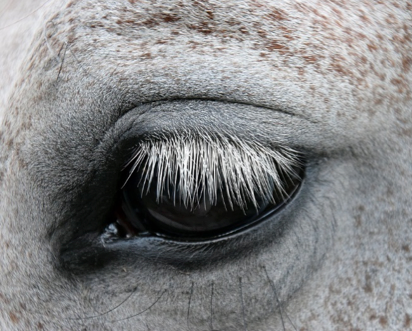“If you’re not making mistakes, then you’re not doing anything,” he said.
When we watch people engaged in HorseDream training make mistakes and recover from them, it is clear that what others call mistakes are merely blocks tumbling down as the wall of their comfort zone crumbles.
When we ultimately find the courage to move outside of our comfort zone, we are able, finally, to shed the habits and thoughts that keep us a prisoner of what we have always done, and allow us to grow and soar and become what we are meant to be.
In all our lives, working with horses teaches us that mistakes are not burdens or bad things in our lives. Instead, they are the means to propel ourselves forward to new and better strategies, to think bigger and bolder, and to innovate through what doesn’t work until we find what does work.
Three of the most common mistakes people make when working with horses are to assume that:
- The horse is a dog.
- The horse will do what you say no matter what.
- The horse understands your language.
In the first instance, we often make mistakes assuming that because one thing we are looking at has some characteristics of another thing we are familiar with, that one will react and be the same as the other. It rarely works. Your horse, for example, is not just a big dog who will cozy up to you instantly if you have a little treat in your pocket. It will not wag its tail and be happy to see you just because you have arrived. It will not do tricks on command when it first makes your acquaintance. We can no more say that horses are like dogs because they are both four-legged animals than we can say all people are alike because they are two-legged. There is no justification for making such a leap. By their inner nature, the dog and the horse are bred to be uniquely different. The dog is a predator, the horse is a prey, so the way they assess their worlds and interpret the messages they receive are quite different.
With regard to the second mistake, a horse will deliberately do just what it wants to do, not what you want it to do, unless you find a way to ensure that the horse sees you as the leader in the relationship. You must either establish yourself as the leader of the horse or fall in with the reality that the horse will lead you.
Finally, the horse will communicate with you, but it cares nothing for your choice of language or command of word imagery. Working with horses teaches you the importance of matching your outside message with your inside message. If you can’t communicate honestly and non-verbally, it will ignore you and go back to doing what it wants to do. A horse understands clearly your intent, even when you don’t. It watches your nonverbal communication and picks up its cue from there. If you want to communicate fully with your horse, you must learn to do the same thing, to watch its body language and interpret its message from what you observe.
These are all mistakes that we make in the broader context of the world around us and the people that we meet. When we learn that we cannot assume connections and patterns of behavior until they have been clearly established; when we establish the basis of our relationship as either leader, follower, or equal; and when we communicate authentically with our inside and outside voices matching, only then can we begin to overcome our mistakes.
HorseDream Canada, founded by Susan Wilson, provides high impact, quality leadership and team development experiences for individuals, teams, leaders and companies. It is part of an internationally renowned Horse Assisted Education Program proving transformative learning experiences around the world. HorseDream Canada is a division of I DO BUSINESS. Inc., a social purpose business. For more information, contact us at [email protected]. Watch for our new book, Leadership 93/7 coming soon!


 RSS Feed
RSS Feed

